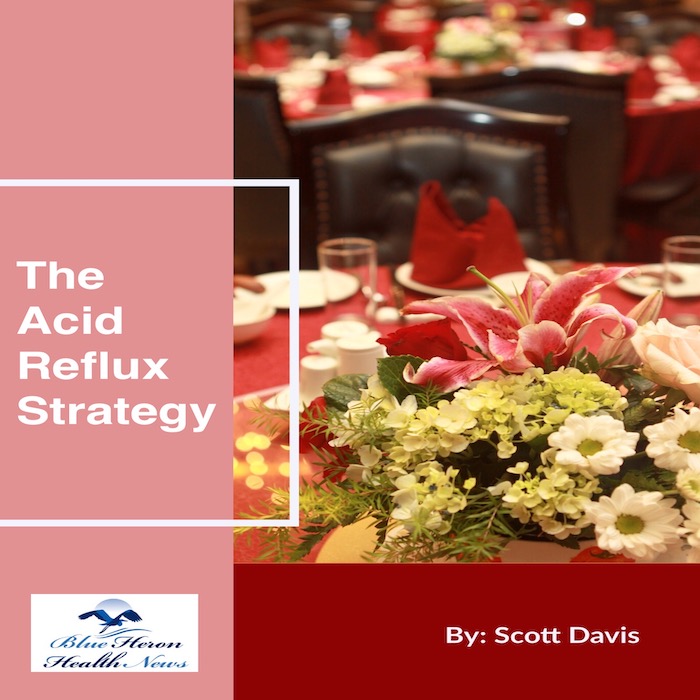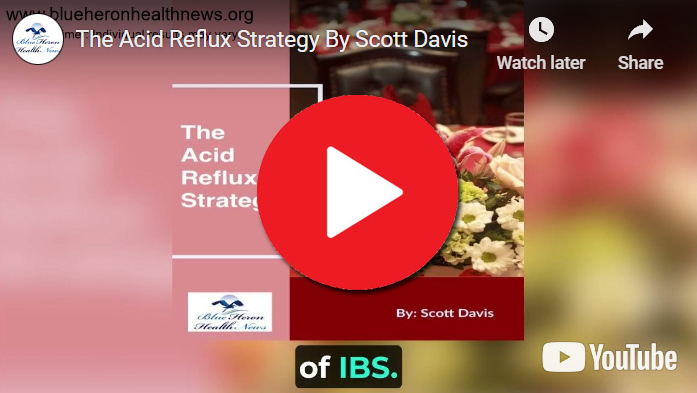
Acid Reflux Strategy™ By Scott Davis According to this eBook, you can start removing the symptoms of acid reflux and other similar problems just by making some changes in your diet, levels of stress, and lifestyle. It will guide you on how to change from the combination of food items to the sleep positions to relieve your problems. It also includes a list of food items you should focus on while shopping for it to find a natural treatment for your symptoms.
How do Americans’ sedentary lifestyles contribute to acid reflux?
Sedentary lifestyles are increasingly prevalent in the United States and are a significant contributing factor to the incidence and exacerbation of acid reflux, also known as gastroesophageal reflux disease (GERD). A sedentary lifestyle typically involves prolonged periods of sitting or inactivity, minimal physical exercise, and poor dietary habits. These factors collectively increase the risk of developing GERD and worsen its symptoms. Here’s a detailed examination of how sedentary lifestyles contribute to acid reflux:
1. Obesity and Weight Gain
a. Increased Abdominal Pressure
- Mechanism: Excess body weight, particularly around the abdomen, increases intra-abdominal pressure. This pressure can cause the lower esophageal sphincter (LES)—the valve between the esophagus and stomach—to relax or weaken, allowing stomach acid to escape into the esophagus, leading to acid reflux.
- Impact of Sedentary Behavior: A sedentary lifestyle often leads to weight gain and obesity, as caloric intake exceeds energy expenditure. This weight gain exacerbates the pressure on the LES, increasing the likelihood of reflux.
b. Hormonal Changes
- Insulin Resistance: Obesity is linked to insulin resistance, which can affect the regulation of hormones such as ghrelin and leptin that control appetite and metabolism. These hormonal changes can influence eating patterns, leading to overeating and weight gain, further contributing to GERD.
- Inflammation: Obesity is associated with systemic inflammation, which may play a role in the development of GERD by affecting the esophagus and stomach lining.
2. Poor Posture and Abdominal Compression
a. Sitting and Slouching
- Increased Abdominal Pressure: Prolonged sitting, especially with poor posture, can compress the abdomen, increasing pressure on the stomach and LES. This compression can force stomach contents, including acid, into the esophagus.
- Reduced LES Functionality: Slouching can affect the positioning and functionality of the LES, making it less effective at preventing acid reflux.
b. Lack of Movement
- Delayed Gastric Emptying: Physical inactivity can slow down the digestive process, including the rate at which the stomach empties. Delayed gastric emptying increases the risk of acid reflux as food and stomach acids are retained longer in the stomach.
- Reduced Esophageal Clearance: Physical activity helps stimulate esophageal peristalsis—the wave-like movements that help clear acid from the esophagus. A sedentary lifestyle can reduce this clearance, allowing acid to remain in the esophagus longer and cause damage.
3. Dietary Habits Associated with Sedentary Lifestyles
a. Poor Nutritional Choices
- High-Fat and Processed Foods: Sedentary individuals may be more likely to consume high-fat, processed foods that are convenient but not nutritious. These foods can delay gastric emptying and relax the LES, increasing the risk of reflux.
- Overeating and Irregular Meals: Sedentary lifestyles often lead to irregular eating patterns and overeating, especially during sedentary activities like watching TV. Large meals can increase abdominal pressure and overwhelm the LES.
b. Increased Consumption of Trigger Foods and Beverages
- Caffeine and Alcohol: Sedentary individuals may consume more caffeine (from coffee, tea, soda) and alcohol, both of which can relax the LES and increase the likelihood of acid reflux.
- Carbonated Beverages: These can increase gas and bloating, further raising abdominal pressure and contributing to reflux.
4. Reduced Physical Activity
a. Lack of Exercise
- Physical Activity and GERD: Regular physical activity helps maintain a healthy weight, enhances digestion, and improves LES function. Lack of exercise, a hallmark of a sedentary lifestyle, removes these protective benefits.
- Postprandial Activity: Light physical activity after meals, such as walking, can help reduce reflux symptoms by promoting digestion and reducing abdominal pressure. Sedentary individuals who remain inactive after eating miss out on these benefits.
b. Impact on Overall Health
- Digestive Health: Sedentary behavior can lead to poor digestive health, including issues like constipation and bloating, which can contribute to abdominal discomfort and increase the risk of acid reflux.
- Mental Health: Sedentary lifestyles can also contribute to stress and anxiety, which have been linked to worsening GERD symptoms. Stress can increase acid production and sensitivity in the esophagus.
5. Sleep and Reflux
a. Sedentary Lifestyles and Poor Sleep Quality
- Sleep Position: Sedentary individuals may experience poor sleep quality, including sleeping in positions that exacerbate reflux, such as lying flat. Elevating the head during sleep can help reduce nighttime reflux, but a sedentary lifestyle might not encourage such adjustments.
- Weight and Sleep Apnea: Obesity, often associated with sedentary lifestyles, increases the risk of sleep apnea, which can worsen GERD symptoms due to repeated changes in intrathoracic pressure and disrupted sleep patterns.
Conclusion
Sedentary lifestyles contribute to acid reflux through a combination of factors including weight gain, poor posture, unhealthy dietary habits, and lack of physical activity. These factors can increase intra-abdominal pressure, weaken the lower esophageal sphincter, delay gastric emptying, and reduce esophageal acid clearance, all of which exacerbate GERD symptoms. Addressing these issues through increased physical activity, healthier eating habits, and better posture can significantly reduce the prevalence and severity of acid reflux among individuals leading sedentary lifestyles.
What are the most common over-the-counter treatments for acid reflux in the USA?
In the United States, over-the-counter (OTC) treatments for acid reflux, also known as gastroesophageal reflux disease (GERD), are widely available and commonly used. These treatments help alleviate symptoms like heartburn, regurgitation, and discomfort by neutralizing stomach acid, reducing its production, or protecting the esophagus. Here’s a detailed overview of the most common OTC treatments for acid reflux:
1. Antacids
a. Mechanism of Action
Antacids work by neutralizing stomach acid, providing quick relief from heartburn and other symptoms of acid reflux. They do not prevent acid production but rather reduce the acidity of the stomach contents that may reflux into the esophagus.
b. Common Ingredients
- Calcium Carbonate: Found in products like Tums and Rolaids, calcium carbonate provides fast relief from heartburn and also supplies calcium.
- Magnesium Hydroxide and Aluminum Hydroxide: These ingredients are commonly found in products like Maalox and Mylanta. Magnesium hydroxide acts as an antacid and laxative, while aluminum hydroxide can help counteract diarrhea caused by magnesium.
- Sodium Bicarbonate: Present in products like Alka-Seltzer, sodium bicarbonate is a fast-acting antacid but may not be suitable for those on sodium-restricted diets.
c. Considerations
- Onset and Duration: Antacids work quickly, often within minutes, but their effects are short-lived. They are best used for occasional relief.
- Side Effects: Excessive use can lead to side effects such as diarrhea (from magnesium) or constipation (from aluminum), and, in some cases, metabolic alkalosis. Calcium-containing antacids can also lead to hypercalcemia if overused.
2. H2 Receptor Antagonists (H2RAs)
a. Mechanism of Action
H2RAs reduce the production of stomach acid by blocking histamine-2 receptors on the stomach lining. They are effective for providing longer-lasting relief compared to antacids.
b. Common H2RAs
- Ranitidine (Zantac): Ranitidine was widely used until it was withdrawn from the market due to concerns about a contaminant (NDMA). It has since been replaced by other medications.
- Famotidine (Pepcid): Famotidine is currently a popular choice and is available in various strengths. It provides relief from heartburn and acid indigestion.
- Cimetidine (Tagamet): Another option, cimetidine has more potential drug interactions than other H2RAs and is less commonly used today.
c. Considerations
- Onset and Duration: H2RAs usually begin to work within 30 to 60 minutes and can provide relief for up to 12 hours. They can be taken before meals to prevent symptoms.
- Side Effects: Common side effects may include headache, dizziness, and constipation. Long-term use, especially in high doses, can lead to tolerance, reducing effectiveness.
3. Proton Pump Inhibitors (PPIs)
a. Mechanism of Action
PPIs reduce the production of stomach acid by blocking the enzyme system known as the proton pump in the stomach lining. They are highly effective in reducing acid production and are used for more persistent or severe symptoms of GERD.
b. Common PPIs
- Omeprazole (Prilosec): One of the most widely used PPIs, available over the counter for treating frequent heartburn.
- Lansoprazole (Prevacid): Another popular OTC PPI, used similarly to omeprazole.
- Esomeprazole (Nexium): A derivative of omeprazole, esomeprazole is also available OTC and is used for treating heartburn and other symptoms of acid reflux.
c. Considerations
- Onset and Duration: PPIs may take a few days to provide full relief and are typically taken once daily. They are best used for treating frequent heartburn or GERD symptoms occurring more than twice a week.
- Side Effects: Potential side effects include headache, nausea, diarrhea, and abdominal pain. Long-term use has been associated with an increased risk of bone fractures, kidney disease, and nutrient deficiencies (e.g., vitamin B12, magnesium).
4. Alginates and Foaming Agents
a. Mechanism of Action
These agents form a protective barrier on top of the stomach contents, preventing acid from refluxing into the esophagus. They are often combined with antacids.
b. Common Products
- Gaviscon: A well-known product containing alginic acid, which forms a gel-like barrier, and antacids like sodium bicarbonate and aluminum hydroxide.
c. Considerations
- Onset and Duration: These products work quickly and are particularly useful for treating nighttime symptoms by forming a protective barrier.
- Side Effects: Generally well-tolerated, but some may experience mild side effects like bloating or gas.
5. Lifestyle Modifications and Complementary Products
a. Dietary Supplements
- DGL (Deglycyrrhizinated Licorice): DGL is believed to help soothe the esophagus and stomach lining and is sometimes used as a natural remedy for heartburn.
b. Herbal Remedies
- Ginger: Often used for its digestive benefits, ginger can be consumed as a tea or supplement.
- Aloe Vera Juice: Some people use aloe vera juice to soothe the digestive tract, though its efficacy for GERD is not well-documented.
Conclusion
OTC treatments for acid reflux in the USA include a range of options such as antacids, H2 receptor antagonists, proton pump inhibitors, and alginates. Each type of medication works differently, offering varying levels of relief based on the severity and frequency of symptoms. While these treatments can be effective for managing occasional heartburn and mild GERD symptoms, they are not a substitute for medical advice. Persistent or severe symptoms should be evaluated by a healthcare professional to rule out more serious conditions and to develop an appropriate treatment plan. Additionally, lifestyle modifications, including dietary changes and weight management, are crucial for managing and preventing acid reflux symptoms.
Acid Reflux Strategy™ By Scott Davis According to this eBook, you can start removing the symptoms of acid reflux and other similar problems just by making some changes in your diet, levels of stress, and lifestyle. It will guide you on how to change from the combination of food items to the sleep positions to relieve your problems. It also includes a list of food items you should focus on while shopping for it to find a natural treatment for your symptoms.
